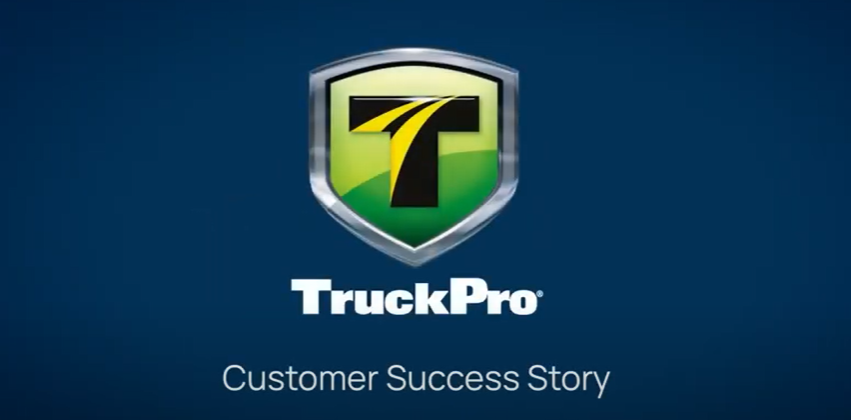Manufacturer Rebates
What are Manufacturer Rebates?
Manufacturer rebates are strategic financial incentives that manufacturers and producers offer to customers post-purchase. They’re designed as a partial refund on the cost of an item. However, unlike discounts that reduce the purchase price upfront, buyers pay full price for an item and later receive money back directly from the manufacturer.
The strategy behind manufacturer rebates is to stimulate sales and customer loyalty by appealing to buyers‘ objectives for savings without directly impacting the purchase price. These incentives can be tremendously effective in competitive markets where perceived value plays a significant role in consumer decision-making processes.
The purpose behind offering such incentives is twofold: Manufacturers aim to increase product traction in a competitive market to encourage sales and boost margins. At the same time, distributors often uses rebates as marketing tools, enticing vendors and customers with attractive post-purchase perks. These incentives may include cashback offers or discounts on future orders; both strategies aim at fostering loyalty towards certain brands or products.
Traditionally, tracking and submitting manufacturer rebates has been challenging for businesses, as they need to match each purchased item with its corresponding manufacturer. As products can exchange hands many times before reaching the end-user, these types of rebates can become especially complex. Adopting a well-designed and accurately tracked rebate program establishes strong pillars for producers engaged in these post-purchase strategies. Tracking claims meticulously ensures transparency between all parties involved—the key being seamless channel management amongst manufacturers, distributors, and end-users.
Managing Manufacturer Rebates Properly
Navigating the complexities of manufacturer rebates presents a myriad of hurdles. Manufacturers face various challenges in executing these programs effectively, from ensuring clear communication to maintaining meticulous tracking and records. Proper management demands strategic implementation, which can yield significant benefits for both manufacturers and the entities they work with.
What benefits can manufacturers gain from managing these rebates better?
Better management of manufacturer rebates can unlock several key advantages, enhancing the overall efficacy and value of these programs.
- Increased incentive value: When managed skillfully, rebate programs become more attractive to customers. This heightened appeal can translate into stronger sales incentives and customer loyalty as buyers perceive greater value in participating in these offers.
- Easier legislative compliance: A structured approach to managing rebates helps ensure adherence to complex legislative requirements. By keeping accurate records and staying informed about regulatory changes, manufacturers reduce the risk of non-compliance penalties.
- Improved financial predictability: With robust tracking systems in place, manufacturers gain clearer insights into their financial exposure from outstanding rebate claims. This improved visibility aids better budgeting and forecasting efforts—critical components for maintaining a healthy bottom line.
- Enhanced communication with partners: Effective communication channels between manufacturers, distributors, and end-users are crucial for successful rebate program execution. Better-managed processes foster transparency which leads to strengthened relationships across the supply chain network.
- Optimized cash flow: Timely processing of rebates allows manufacturers to manage cash flow more efficiently. Knowing when funds will be disbursed as part of promotional campaigns enables smarter capital allocation decisions—thus optimizing operational funding streams.
- Stronger business relationships: Well-executed rebate strategy can help cement long-term buyer-seller relationships and encourage buyers to choose your organization over the competition. In markets where custom acquisition costs are high, earning repeat business becomes invaluable.
The benefits that manufacturers can realize from better managing rebate programs provide a significant competitive edge, especially in saturated industries where buyers have options. But, allowing these benefits to come to fruition doesn’t come without overcoming common hurdles and challenges.
Challenges of rebate management for manufacturers
Managing and tracking manufacturer rebates comes with its own set of challenges that can impede a company’s ability to realize the full potential of these programs.
- Lack of visibility into effectiveness: Without clear metrics, manufacturers struggle to gauge the true impact their rebate offers have on sales and market share. This lack of visibility makes it difficult to assess whether these incentives are driving desired behaviors or simply eroding profit margins.
- Complexity in tracking and processing data: The intricate nature of tracking numerous transactions across various channels adds complexity to processing rebate data. Accuracy is critical but often burdensome when processing vast amounts of data, an area that is often subject to errors and delays.
- Transitioning from manual processes: Many manufacturers still rely on manual processes for managing rebates—a method prone to inefficiency and mistakes. Transitioning from such outdated systems towards automated solutions requires an investment in technology as well as training staff on new procedures—both demanding resources.
The repercussions stemming from improperly managed rebate programs extend beyond administrative headaches; they directly affect a manufacturer’s insight into ROI. Ineffective management can lead companies astray by presenting skewed financial pictures regarding promotional campaigns‘ success rates.
Using advanced rebate management software plays a pivotal role not just in improving operational efficiency but also in enhancing customer loyalty and satisfaction. These tools help create more targeted incentives based on consumer behavior analytics, fostering stronger connections between brands and their buyers while simultaneously streamlining internal workflows.
What should manufacturers looking to improve rebate management do next?
Manufacturers aiming to enhance their rebate management practices should consider the following steps:
- Implementing rebate management software: The first move is adopting sophisticated software designed specifically for rebate management. This technology can automate and streamline the entire process, from tracking sales against rebate programs to issuing payments.
- Tracking performance religiously: It’s crucial to keep a close eye on how rebates perform. By regularly tracking performance data, manufacturers can adjust strategies in real-time, ensuring that they’re meeting targets and optimizing program effectiveness.
- Analyzing risks and opportunities: With robust analytics capabilities of modern software, manufacturers have the tools needed to evaluate risks associated with each deal as well as uncover new opportunities for growth through better-targeted incentives.
- Improving communication with partners: Establishing clear lines of communication between all stakeholders involved in rebate processes—like distributors or retailers—is essential. Better dialogue helps everyone stay aligned on objectives and expectations regarding rebate programs.
By managing rebates more effectively, manufacturers can actualize profitable rebate strategies that provide substantial benefits. Finely tuned rebate programs maximize true incentive value by tailoring offers that genuinely resonate with customers. These systems also ensure compliance with legislative requirements, avoiding costly fines.
Types of Manufacturer Rebates
Manufacturer rebates come in various forms, each designed to suit different marketing objectives and consumer behaviors. Understanding the nuances between these types can help manufacturers tailor their rebate strategies effectively.
Purchase Price vs. Retail Price vs. Sales Price vs. Selling Price
In retail, prices can be labeled differently depending on various factors and stages in the supply chain.
- Purchase price: This is the amount a retailer pays to acquire goods from a supplier or manufacturer. It includes any discounts or rebates that are applied at this stage but excludes additional costs like shipping or handling fees. For example, if a store buys bulk t-shirts for $5 each after a volume discount, that’s their purchase price.
- Retail price: Also known as the list price, it’s what customers see on tags in stores—the suggested selling price before any sales promotions are applied. The retail price typically covers all costs associated with getting products to shelves plus profit margins. If our t-shirt retails at $15, this reflects its marked-up value aimed at end consumers.
- Sales price: This refers to the actual transactional cost when an item is sold during promotion periods—often lower than retail due to markdowns or specials offered by retailers seeking faster inventory turnover; think seasonal clearance where our shirt might sell for just $10.
- Selling price: Similar yet subtly distinct from sales price, selling (or sale) price can denote what an item goes for under normal conditions without specific promotional reductions—it’s effectively synonymous with ‚final‘ or ‚transaction‘ pricing post-negotiation which could include loyalty discounts unique to individual buyers.
These prices are calculated based on multiple inputs: cost of goods sold (COGS), market competition levels, and perceived customer value among others—all fluctuating elements capable of influencing these figures dynamically over time within commercial settings.
Time of Purchase
Time of purchase rebates are discounts applied immediately during the sales transaction, offering instant savings to customers as they buy products. These types of rebates enhance customer engagement by providing an immediate sense of value and gratification, encouraging them to make a purchase decision on the spot.
Businesses utilize point-of-sale (POS) systems to process these rebates efficiently at checkout—ensuring that promotional offers are correctly accounted for in real time. This immediacy not only simplifies the buying experience but also streamlines operational efficiency from a retailer’s perspective, seamlessly integrating marketing activities with daily sales operations.
Proof of Purchase
Proof of purchase rebates require customers to show evidence that they have bought the product before they can claim their discount or refund. This type typically involves collecting physical proofs like receipts, UPC codes, or packaging cutouts which must be submitted within a certain timeframe after purchase.
From a business process standpoint, maintaining accurate records is critical as it helps verify valid transactions and prevents fraudulent claims. It also allows companies to track the effectiveness of marketing campaigns by correlating sales data with rebate redemptions. The meticulous collection and analysis of this transactional information strengthen the relationship between marketing activities and customer purchasing patterns, offering valuable insights for future promotional strategies.
Time Frame for Claiming Rebates
The time frame for claiming rebates is a crucial element that dictates when consumers are eligible to receive their promised incentives. Manufacturers often set specific windows during which purchases must be made and corresponding proofs of purchase submitted in order to qualify for the rebate offer.
For instance, a consumer might need to buy an appliance within a promotional period—say, between March 1st and April 30th—and then have until May 15th to postmark or online submit all necessary documentation.
Deadlines imposed by manufacturers serve both as motivators for prompt customer action and as mechanisms to manage the financial implications of rebate offers. It’s important for consumers to adhere strictly to these deadlines; missing them can mean forfeiting the rebate altogether. Such timelines also help businesses forecast redemption rates and allocate resources accordingly while maintaining control over the promotion’s life cycle.
College Graduates and Rebates
Rebate programs tailored for college graduates are designed to ease the financial transition from academia into professional life. These incentives often come in various forms, including student loan interest rebates that offer a chance to recoup a portion of the interest paid on educational loans. Tuition rebate programs might provide refunds or credits against tuition paid if certain criteria are met during their academic tenure.
Additionally, educational tax credits serve as another form of rebate by allowing recent grads to deduct a part of their education expenses from their taxable income—lowering tax liability and potentially leading to larger refunds during tax season. By staying informed about these opportunities and understanding eligibility requirements, college graduates can leverage such financial incentives to mitigate some of the costs associated with higher education investments.
Sales Tax and Rebates
Sales tax implications on rebates can influence the final cost of a product, affecting consumer savings. Typically, sales tax is calculated based on the retail price of an item before any manufacturer rebate is applied. This means that even if customers receive a post-purchase rebate, their initial out-of-pocket expense may include tax on the full purchase amount rather than the discounted price.
The relationship between sales tax and rebates highlights potential savings or additional costs for consumers. While they might save money through a rebate program, they don’t always see those savings reflected in immediate sales tax reductions at checkout unless stated otherwise by specific exemptions or regional legislation.
It’s essential to understand these nuances, as some jurisdictions offer special cases where rebates are considered at the point of sale for taxation purposes—potentially lowering both taxable amounts and total expenses right away.
Annual Percentage Rate (APR) and Rebates
When purchasing big-ticket items like cars, buyers often encounter offers that include either a 0% APR financing deal or a cash rebate. With a 0% APR offer, the buyer pays no interest over the financing period, which provides significant savings on the overall borrowing costs. On the other hand, a cash rebate provides an immediate discount on the vehicle’s purchase price.
To compare these options effectively, consumers should calculate the total cost of the vehicle with each incentive. With 0% APR deals, while there may be no interest charges, higher monthly payments could still result due to shorter finance terms.
Conversely, taking advantage of a cash rebate might lower initial outlay but incur interest charges if financed traditionally—potentially offsetting some of those upfront savings over time. Careful consideration is key to determining which option yields greater financial benefit based on individual circumstances and long-term ownership costs.
Examples of Manufacturer Rebates
Manufacturer rebates are a diverse set of incentives that companies use to promote sales and build loyalty among buyers. Here’s a look at some common examples:
- Tiered rebates: These rebates increase with the quantity purchased. For instance, buying 1000 items might earn a customer a 1% rebate, but purchasing 2000 could bump that up to 2%. The more you buy, the greater your savings.
- Volume incentive rebates: Aimed at boosting large orders, these rebates kick in once buyers hit certain volume thresholds. It’s an all-or-nothing deal—miss the target and forfeit the rebate.
- Value incentive rebates: Unlike volume-based programs, these look at total spending rather than item count. A buyer may get back a percentage (like 1%) of their total purchase value as a rebate.
- Buy X get Y free rebate: This straightforward incentive offers free products based on quantities bought—for every set number of units purchased (say 300), customers receive additional ones (perhaps 15) gratis.
- Standard percentage of turnover rebate: With this approach, companies offer a fixed percent back on overall turnover—it doesn’t matter what or how much is bought; it’s about spending totals.
- Standard value per unit rebates: These give back set amounts for each unit sold—simple and effective for encouraging higher sales volumes without tying benefits to order value or complexity.
- Foodservice industry rebate: In the food service industry, manufacturer rebates work through Group Purchasing Organizations (GPOs) or Buying Organizations (GBOs). Restaurants that sign up within a GPO or GBO can benefit from eligible rebates negotiated by the organization, which are usually based on the products purchased, the quantity, and the manufacturers involved.
Each form of manufacturer rebate serves distinct marketing objectives and consumer engagement strategies. By strategically tailoring rebate programs according to target markets and goals, manufacturers harness the full potential of these incentives as leverage for encouraging more sales and reinforcing brand strength.
Using Manufacturer Rebates to Increase Customer Loyalty
For manufacturers, cultivating loyalty with buyers and business partners transcends traditional sales goals; it’s pivotal for long-term viability and profitability. Loyal customers represent recurring revenue with lower acquisition costs compared to earning new business.
Why increasing customer loyalty is important for manufacturing businesses
In the manufacturing industry, customer loyalty isn’t just a feel-good metric; it’s an essential pillar of business sustainability. The impact of customer churn—a scenario where clients cease their relationship with a company—can be severe. High churn rates erode revenue and inflate marketing costs as businesses scramble to replace lost customers. Moreover, customers‘ expectations are constantly evolving; they seek personalized experiences and value from brands they patronize.
Implementing rebate management systems offers manufacturers a precise mechanism to increase loyalty and referrals effectively. These systems streamline the tracking and issuing of rebates, ensuring that incentives reach customers accurately and promptly—an action that reinforces positive purchasing behaviors. They also provide valuable data insights allowing manufacturers to tailor future rebates more closely to customer preferences.
In conclusion, manufacturer rebates are not merely a temporary promotion; they’re a strategic tool designed to incentivize and retain customers long-term. When manufacturers offer rebates, they provide an immediate financial reward that can influence purchasing decisions and business relationships in their favor.



